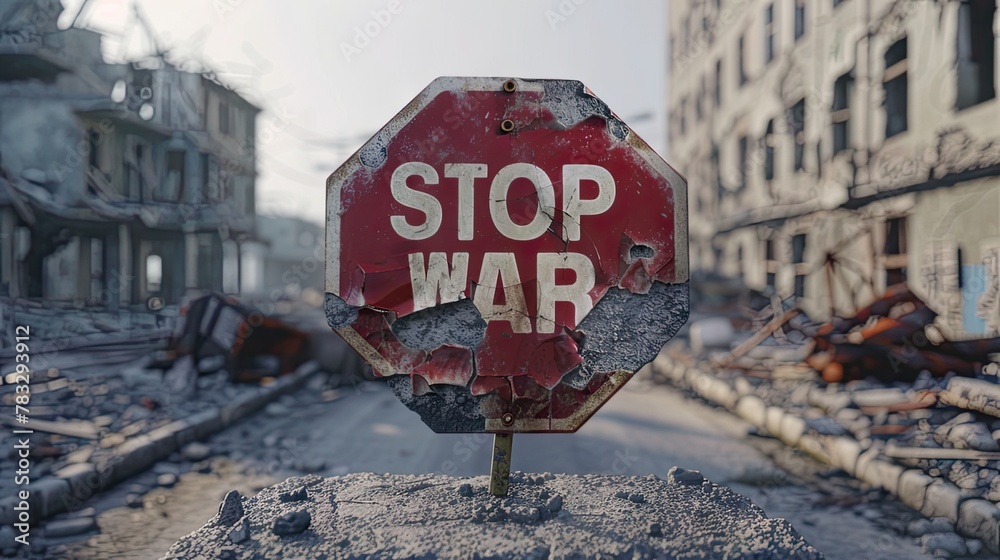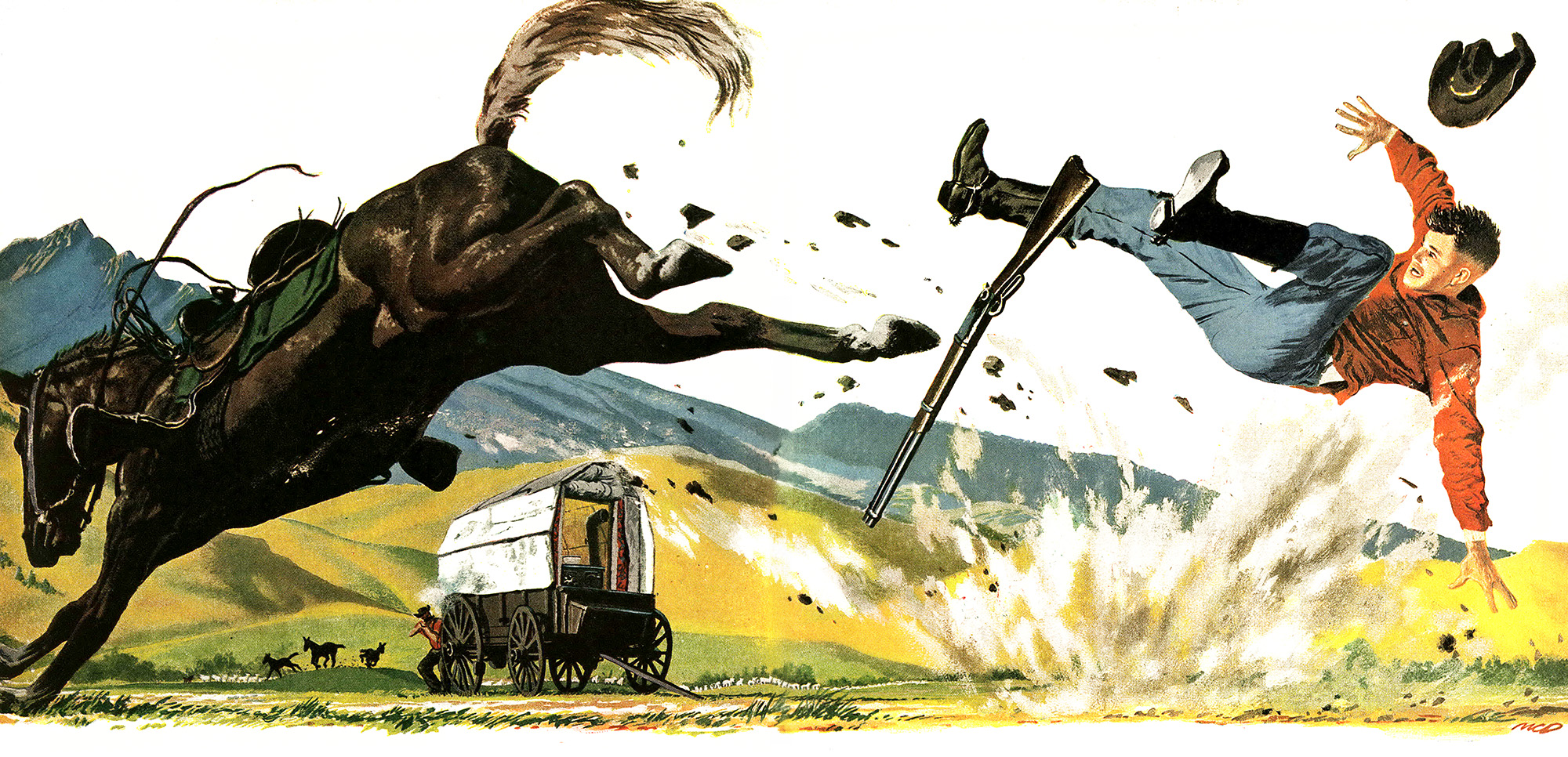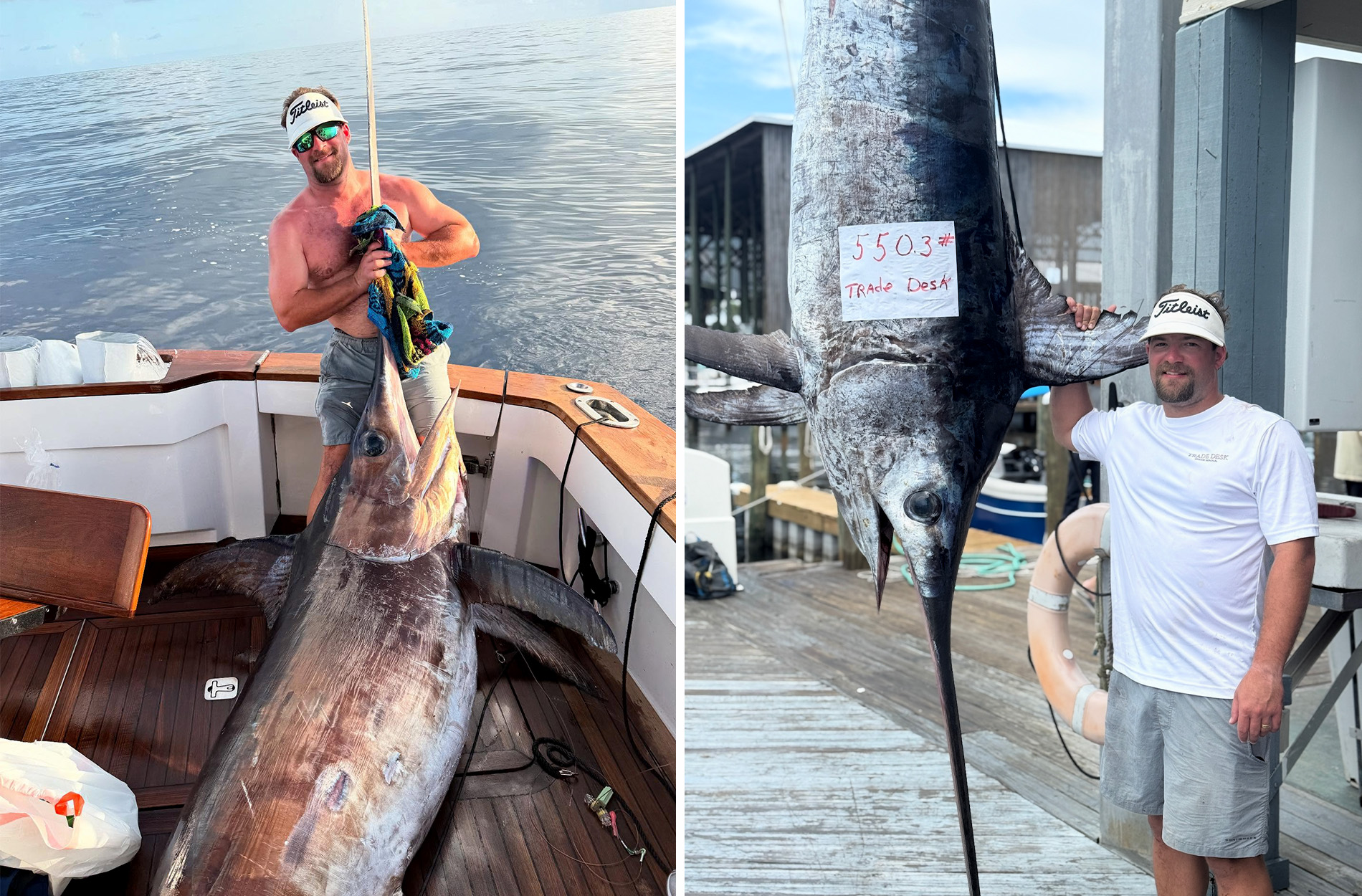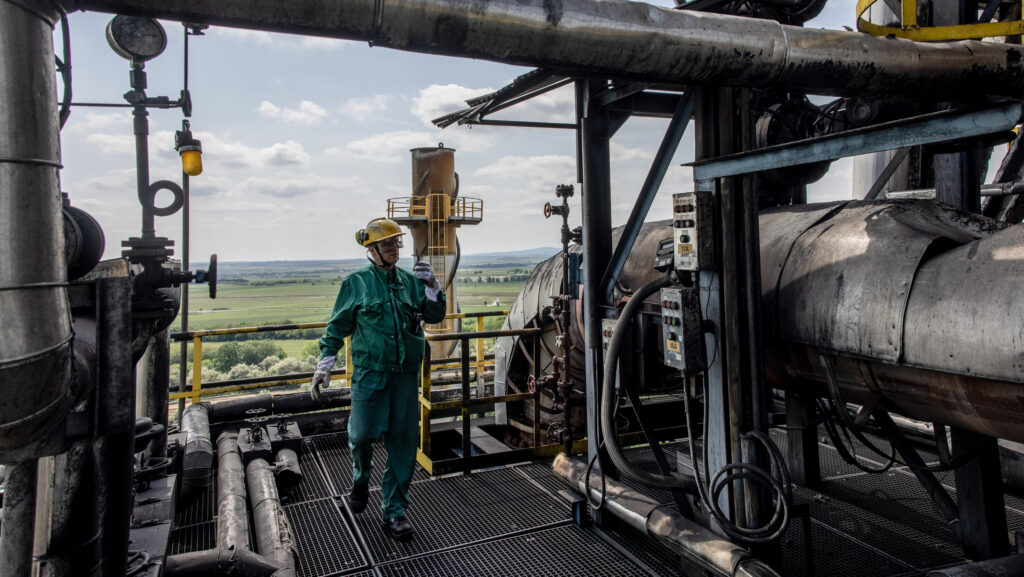I Participated in a Traditional German Boar Hunt

This story, “Dressed to Kill,” appeared in the August 1953 issue of Outdoor Life.
It was a solemn moment. The bugler stood with his back to the assembled company, facing the long red rays of the setting sun that slanted down the cathedral aisle of black pines. The golden notes rang clear in the autumn air and echoed back across the valley. At pauses in the call you could hear only a subdued rustle of pine needles as some member of the group eased his weight over to the other foot.
When the last long note had poured from the leather bound field horn, the bugler turned and slowly came toward us. I approached him and cleared my throat a bit self-consciously.
“What was that call, Herr Fischer?” I asked. “That,” he answered in a matter-of-fact voice, “was To the Boar That Was Shot At and Missed, With a Warning Not to Come Back.”
There were about a dozen of us finishing the after noon’s last unsuccessful drive for wild pigs in the forests of the Taunus Mountains near Wiesbaden, Germany. The group was about evenly divided be tween German and American hunters.
Those who were members of the U. S. Occupation Forces were togged out in the usual American outfits which were as varied as the tastes of the owners. There were a couple of full-scale Pennsylvania dude jobs with big, state-side licenses pinned to the backs of the red jackets. Some wore G.I. field clothes, and one officer still had on the uniform he’d worn on duty that morning.
The Germans were smartly turned out in the forest green, semi-military hunting clothes demanded by protocol, for The Hunt in continental Europe is as traditional an affair as the lordly canter after the foxes in old England.
Whatever else came out of World War II, it gave a lot of Americans an opportunity to learn first-hand many things about the rest of the world that we never would have picked up from books. Most of us came home with the profound conviction that the United States of America is the only country in the world to live in. The comparison between life in a war-torn Europe and the one we’d left behind was unfair, to be sure, and language barriers prevented most of us from understanding the thoughts and feelings of people we were inclined to regard as inferior.
But there were a thousand and one oddities of life overseas that amused us or aroused our scorn. Windows worked in and out instead of up and down. Door handles were different. The public biffy was likely to be right out on the sidewalk and the dopes didn’t even know how to drive in traffic.
Those of us who stayed on after the war was over saw life take on more of its normal color, and we became accustomed to things like cobbled streets and beer bottles with reusable porcelain tops. We also came to realize that European customs have real meaning and value.
So it was with the traditions of the hunt. We saw that hunting in Europe had passed through all the stages from infancy to full maturity and that, with its coming of age, had clothed itself in formal garb and equipped itself with the formal rules of a major sport.
I’m sure that at the beginning of the occupation the German foresters, with the little silver acorns on their shoulders, looked with scorn on the exuberant, unconventional conduct of the Ameri- cans they guided. The foresters were assigned by the military government offices to the duty of conducting Allied hunting parties, and at first they were a bit stiff. But just as we became tolerant of their formalities, so they had their eyes opened to the real meaning of democracy. Then the fun began.
The German foresters and jaegers got as much of a bang out of our devotion to the chase as we did, for in the days right after the war they couldn’t hunt on their own and weren’t permitted to have weapons. It wasn’t long before we came to a fine working arrangement with them. We’d bring along extra rifles or shotguns and they’d lead us to choice shooting. We paid the beaters and furnished the smokes and schnapps, and the greencoats saw to it that we got plenty of shooting.
Our organized hunting depended on the large wild-pig population of central and southern Germany. Other big game species are present in abundance, but the lowly pig draws the biggest gate. The average male wild pig, called a keiler, is about 60 inches long from nose to tail, stands some 30 inches at the shoulder, and weighs from 300 to 400 pounds depending on how he’s been feeding. An occasional one will go to 450 pounds or so and, according to one forester, the all-time German record boar weighed 600 pounds. “That was a long time ago,” he added hastily.
Roaming in herds at night, the wild pigs forage at will in the unfenced fields and raise havoc with potatoes and grain-to the intense annoyance of the frugal German bauer. When the fields are bare the pigs turn to the roots and nuts of the woods and plow up meadows for grubs and worms. Like his Poland China·cousins, the wild boar is omnivorous and eats what ‘small game he can catch.
In the early days of the occupation, these black predators were so numerous that many requests were received from Germans for American hunting parties to help thin their ranks. In one county near Frankfurt the foresters’ game count in the winter of 1947-48 listed 1,600 wild boars, which we undertook to liquidate with gusto. In three winter, months,
when the tracking was good, our group accounted for 164 porkers. Manv of these were shot on dawn or ‘ moonlight stalks. but the majority were taken on traditional drive hunts.
The European boar drive follows the same general pattern of the deer drives in our Eastern woods. One group of fellows beats the bushes while another group waits for the game to come out. But there the parallel stops. For one thing, German beaters aren’t armed, and for another, shooting a fellow hunter is considerable of a fox pass, as the fellow says.
During my 6½ years in Germany I must have taken part in over 100 pig drives. Many were spontaneous scrambles touched off by a phone call reporting fresh tracks in the snow, but most were planned ahead in areas where herds had been spotted or where farmers complained of heavy damage.
Of all these hunts, one stands out not only for its climax but for its staging. We’d set up a hunt in the Waldmischelbach revier, in Unterfranken, two weeks in advance, and had been assured that no shooting had been done in the area during that time.
Lying between Frankfurt and Würzburg along the western slope of the Spessart Mountains, the country was alive with pigs. The ridgetops of these mountains are old and rounded, and the floor of the forest is covered with a soft carpet of needles from the tall, straight tannenbaum.
The long arms of dark pines extend down the ravines to the valley fields where the small farmers crops, struggling in the rocky, worn earth, are prizes in the constant war between boar and bauer. We always could count on plenty of help from these farmer-villagers who are the modern counterpart of the medieval peasants. They willingly did the dirty work of beating the bushes, and took the shooting of each pig as a personal triumph.
Grizzled old Herr Keller had made the necessary arrangements with the local forester, Herr Rett, whose love in life was his sloe-eyed hunting dachshund, Lisa. Keller was one of the Prussian types who had been cleared of the Nazi taint by the local “cleaning board.” He was tall and straight as one of the oaks which it was his job to tend, for he was the regional forest- master. In his capacity he enjoyed the privilege of being a sort of master of the hunt, for much of the Unterfranken woods are state-owned.
That morning in December 1947 we drove through the little villages east of Aschaffenburg to the frost covered meadows of Waldmischelbach, where Rett’s stone house nestled against the slope leading to the forest. A thin blue thread of smoke rose straight up from his chimney, a sign of good driving, for pigs don’t like wind and often will refuse to break cover in a breeze.
Clustered about Rett’s doorstep were the treibers, a motley crew of drivers arrayed for rough going. Most wore rubber boots of the fire-house variety. Some had heavy rubber or canvas butchers’ aprons tied over their work clothes as protection against thorns and pine needles, and several wore old uniforms with P.W. stenciled on the back. As we approached they pulled off their hats and bobbed their heads like a bunch of extras in a Hollywood historical. The broad smiles on their faces reflected pleasure at being there, not only because they got a kick out of it but because they knew they’d get mark-an-hour wages plus plenty of cigarettes. And if our luck was good, they’d also get fresh meat, a Sunday treat in any German house in those days.
The party included Keller; warm, friendly Rett; two foresters with borrowed military government Mausers; Carl Burckhardt, representative with the Army Exchange Service; Capt. Walt Dreibelbis, who wouldn’t let his wife touch his hunting trousers for fear of losing their pig perfume, and a couple of guests from headquarters.
After the usual prolonged confab between foresters and bauers on where the pigs were laid up, we started up a winding wagon road to the first stand.
With imperious gestures and barked orders. Keller sent out the beaters. Then he gathered the hunters around him and made his opening statement, as custom demands. We knew darned well what he was going to say, but it is an indispensable part of the proceedings for the master of the hunt to explain the lay of the land, state what game is in season, and warn against careless handling of firearms.
Keller’s greencoats stood at attention while he intoned the references:
One horn blast was the signal for the drive to start. Two toots would mark the end, and three would announce that pigs had been seen but not flushed and that the beaters would back-track. Only pigs, foxes, and hares were to be taken, the quota of deer having been filled.
All guns would be kept unloaded until hunters were placed on their stands. Shooters would stand close to the thicket and facing away from it. No shooting would be done into the thicket, for, Keller solemnly proclaimed, “It is better never to shoot a keiler than to shoot a beater.”
Then with raised hat and a weidmanns-heil, the hunter’s greeting, he divided the party and marched off with half of us while Rett placed the other half on the opposite sides of the square thicket. The drive lay on a steep slope, and I drew an uphill corner, a choice spot. Almost invariably pigs will run uphill when flushed unless there’s snow on the ground.
Getting my back to a sizable young pine, I loaded the 7 mm. Sauer Mauser with six rounds of home-brew, 173- grain R.W.S. H-Mantel bullets ahead of 42 grains of. No. 4895 powder. A single long, high note on Keller’s horn started the peasants into the brush. Each had his own ideas as to what kind of a noise would scare a pig. Some imitated a dog’s barking, others held to a deep, monotonous, “HO, sau, HO, sau,” while a third school chanted, “HUP-hup-hup, HUP-hup-hup-hup,” and beat time on the saplings with their sticks.
Usually we had to drive several thickets before spotting game, but Rett had said that his back potato patch had been raided the night before. Sure enough, this morning the deck was stacked. There was a tremendous commotion in the depths of the cover. The dogs began a wild chorus and the beaters yelled, “Sau vor! Sau rechts! Viele sauen!” (“Pigs ahead! Pigs on the right! Many pigs!”), and a herd of 12 or 15 black-and-gray locomotives burst out of the brush behind me. I heard of a couple of boys from Hanau who’d ended up in the hospital, after too close acquaintance with boars rampage, and I was scared stiff as the herd parted and passed me on ‘ both sides. Some were so close I could have whopped them with the barrel of the Mauser, but I didn’t. Not one pig made a move to indicate it knew I was there, and not until the pack was some 30 yards away did I come to life and start shooting. I emptied the magazine, and didn’t touch a hair.
Two drives later there was more hullaballoo in the hemlock, and guns started talking down the ravine in Walt’s direction. When we came together at the rendezvous, two beaters were hauling a nice sow and Walt was modestly congratulating his pants.
Then Keller came up with two empty 16 gauge hulls and a sad story. It must have hurt him to admit it, but he’d had a good chance at a couple of pigs well within range and had missed both.
It was now noon so we went down to the crossroads to meet the truck in which Carl had thoughtfully installed a big cooler full of soft drinks and beer. We soon had a fire going and , passed around the wieners, buns, and trimmings. The beaters watched with stolid curiosity as we cut beech twigs, roasted our franks, and ate and washed them down with ice-cold beer. They set their bottles of Munich Hell by the fire to warm and, disdaining our P.X. buns, ate their wieners cold with great hunks of black bread dug from their three-cornered rucksacks.
When all the grub was gone and each cigarette butt deposited in its own little grave under the forstmeister’s watchful eye, we started off for the next thicket.
After two or three dry runs, Carl and I found ourselves about 70 yards apart on the same side of a long thicket composed partly of bushy oak saplings still carrying dead leaves. All was quiet save for the distant “hup-hup” of the beaters. With rifle at high port, I was watching Carl when, without a sound, three good-size pigs trotted out into the road and started toward me. There was no breeze, and I didn’t move a muscle, but I guess my wool shirt was getting kind of high for the pigs suddenly wheeled and dashed off across Carl’s front, running with that comical, stiff-legged rocking-horse gait that eats up ground at an amazing clip.
Carl takes a size 250 armchair and, like many big men, hasn’t a nerve in his body. He’s held several pistol championships up Philadelphia way, and is one of the best game shots I’ve ever known. But shooting pinwheel l0’s on the run through dense woods takes a bit of doing.
Carl’s shot at the lead pig clipped bark as the three fugitives angled away up the hill. But his second tipped over the file-closer, which slid 10 yards on his nose and sent up a shower of dead leaves. A lone shot from the end stand proved to be Keller’s. He’d redeemed himself by putting a slug through a shoat’s neck.
The beaters were beginning to frazzle out. Their clothes were soaked from melted frost that showered like rain from every bush and sapling. Pushing through that kind of cover is real work, and they were ready to quit. But until it gets too dark to shoot there’s always one more drive, the one where the big ones must be, so we gave the beaters an extra cigarette ration and headed up the road.
It was late afternoon and the pale sun’s rays were fast fading through the roof of the forest. The air had started to move fitfully, arid I was shivering in my damp jacket when the drive started. This time I’d drawn the rückwechsel, or back crossing point.
Keller’s horn sounded faintly from the other end of the thicket, and slowly the bauers pushed their way into the brush. They weren’t making with the fancy imitations any more, but grunted and cussed enough to make up for it.
Long after I’d lost the sound of them I stood and looked up and down the face of the thicket. Finally, sure that there were no pigs on hand, and knowing that the beaters were· far out of range, I walked across the road and sat down on a dry bank facing the pines. I’d been on my feet for over four hours, mostly standing still. It was good to sit and relax. I lighted a cigarette and placed the rifle across my lap, safety on and still loaded.
There was a little scuffle in the leaves to my left. I swung the rifle up, only to find in the scope one of those tiny, jet black squirrels with long, tufted ears like a pixie’s. A few seconds later there was another rustle, and a young fox came out of the thicket directly in front of me. He spied me, sat down, cocked his head on one side like a setter, and looked me over. Then he grinned, hung his tongue out, and I imagined he was making up his mind that I was an odd bush he hadn’t noticed before. Then he got up, yawned, and turned away.
I shuffled my feet, and the fox did a back somersault and pratt fall that would have done credit to Buster Keaton. There was just a red streak and a faint vapor trail to show which way he went.
The light wind had grown cold, and I was ready to go home. But the “Allthrough” hadn’t sounded, so I huddled down, rifle across my knees, and glanced along the thicket now and then. My gosh! There, staring at me from the same small opening. out of which the fox had come, was a boar. Not just any old boar, but one of those Big Ones that only beaters ever see. He hadn’t made a sound as he came up to his outpost. Smarter than the fox, he’d stayed out of the trail while he tested the wind, which was blowing at right angles and couldn’t warn him of my presence.
He swung his head slowly from side to side, his weak eyes looked at me without seeing me, and the tip of his snout worked like a rabbit’s. My body had stepped up its adrenalin production, and the blood was pounding in my ears. Not only was this the best trophy pig I’d seen, but I wasn’t in much of a position to do anything calm and rational should he spot me and object to my being there.
The boar turned half away, and I took the chance to raise the rifle and get him in the scope. Then, feeling on more equal terms with him, I got to thinking. It kind of went against the grain to mow down standing game at a measly 15 yards, but then I wasn’t too darned sure that I could. My 4X glass was sighted to put my shots about three inches high at 100 yards, for I’ve still got the bullseye habit of squeezing off under center. I knew that the bullet’s path would cross the line of sight through the scope somewhere between 50 and 75 yards out, and that its strike at 15 yards should be low.
He swung his head slowly from side to side, his weak eyes looked at me without seeing me, and the tip of his snout worked like a rabbit’s. My body had stepped up its adrenalin production, and the blood was pounding in my ears.
While I was wondering whether to shoot, the keiler stepped forward. That made up my mind for me. The tip of the post reticule was sitting a bit high on his neck when I set the back trigger. At the click, the boar turned his head sharply, and I flicked off the set trigger.
Here he came, rushing across the road and heading for the tall trees beyond. I swung with him, still from my unapproved, semisquatting position, and found him in a gap between the trees long enough to get in another shot. He paid me no never mind, and as he disappeared over the hill I cussed the luck, the cold, the scope, and all pigs.
The wind brought the salt water dripping from my eyes and down my nose, and my knees complained bitterly as I got to my feet and started over to look at the keiler’s trail. His spoor was easy to follow. His hoofs had thrown plenty of black dirt onto the brown floor, and glory be, there were some generous flecks of red to spur me on. The trail swerved into a patch of
scrub oak and led me to my prize, dead 100 yards before he’d own up to it. Slithered on his side in a pile of brush, he didn’t look nearly so formidable as he had when on his feet. He was no record for weight, but the sight of his glistening tusks was mighty satisfying. He was the first pig I’d bagged that carried real ivory.
The outside curve of his hooks measures 6¾ inches, and his grinders are 3½ inches long. Mounted with the smaller tusks of a heavy sow I brought down later, they look fine in the hand carved oak-leaf mount made for them by Herr Motl, the master taxidermist of Wiesbaden.
I found that my first shot had got him through the center of the neck, where I’d meant it to go. The second had gone through his flank and into the lung cavity. The explosive action of the R.W.S. bullet had busted him up proper. I couldn’t understand why the neck shot hadn’t stopped him until I saw him opened the next day. I’d told Rett that he and the beaters could have half the meat, and with true Teutonic competence he sawed that blamed pig exactly in two from the tip of its nose to the root of its tail. Then I saw that a boar’s spine curves down from the skull to the low-slung shoulders, and that the massive neck is all gristle on top. My first shot had only stung him.
Dressing out game has never been an irksome chore to me, but I knew that Keller’s foresters would be insulted if I stuck my knife into the keiler. The “outbreaking” is one of their duties, a job they do proudly and with finesse.
So I walked back to the approaching party and led them to the kill. After cutting a small twig of pine and placing it into the boar’s mouth as his “last bite” to carry him over the Styx to better pastures, Keller dipped another sprig in the pig’s blood and, with a bow and a weidmanns-heil, proffered it to me on the crown of his hat. I placed the badge of success in my cap, and Keller made a solemn little speech.
Then the whole gang, beaters included, filed by in order of rank and gave me their congratulations with hand-shaking so vigorous it left my shoulder numb.
Read Next: The Lost Art of Shooting Running Game
After that the day’s bag was lined up, with the keiler on the right in the place of honor and the other pigs taking their places according to size. Keller handed his horn to Herr Fischer, the musician of the ensemble. It was al most like a funeral. We stood quietly as Fischer lifted the bright brass to his lips, and I felt I should take off my hat or salute or something. The bugler made the hills echo with his music, and when he’d finished I asked him what call he’d sounded.
“That,” he said with a grin, “was the Salute to the Boar That Was Not Missed!”
Read the full article here




